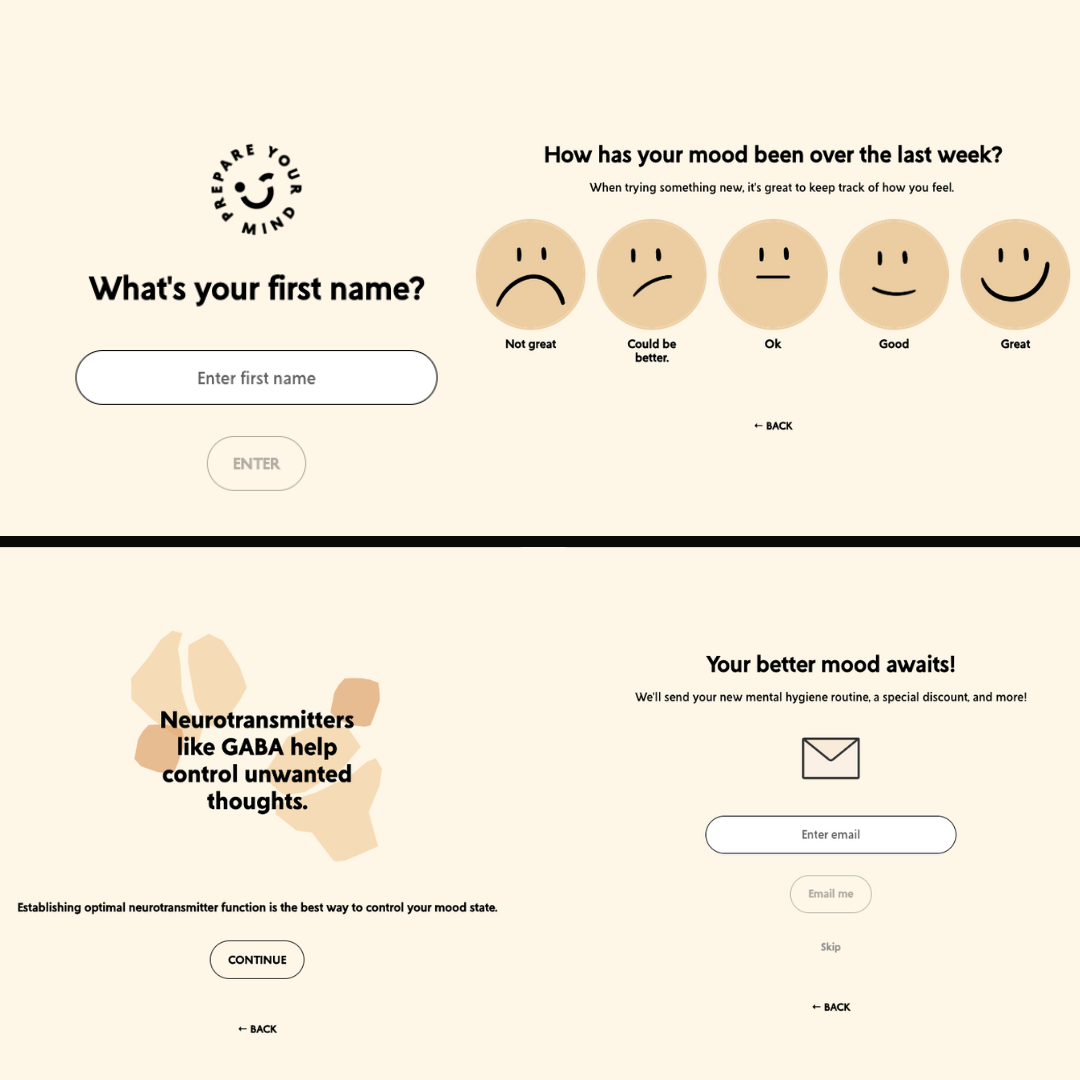If you are an e-commerce leader aiming to enhance shopper experience & boost your sales, here's a game-changer for you - an AI-powered Product Finder. This isn't just a tech upgrade; it's a crucial tool that brings a high level of personalization to shopping journeys on your platform.
Prominent e-commerce expert Blake Morgan has quite aptly noted, "Personalization is not a trend, it’s a marketing tsunami." An AI-powered product finder is as an essential tool to fully tap into the potential of personalization.
What is an AI Product Finder?
Unlike a traditional product finder, an AI Product Finder works by understanding and predicting your customer's preferences, presenting them with product suggestions that align closely with their individual tastes and needs. In doing so, it shifts the way your e-commerce platform interacts with shoppers - building loyalty and raising the bar on overall customer satisfaction. This direct approach not only keeps your customers hooked but also significantly optimizes their shopping experience, turning browsing into buying.
The basics of AI Product Finders
Let's find out what’s under-the-hood of an AI product finder. Essentially, it's an intelligent tool that aids customers in finding products that align with their preferences and needs, by asking a series of questions connected with product attributes. This not only streamlines the search process but also makes the personalization feel genuine and nuanced.
👉 Mechanism of an AI Product Finder
Unlike a traditional product finder, an AI Product Finder operates with a clear understanding of your inventory & sell through data, aligning products with customer preferences through a series of well-crafted questions and options.
Under the hood of this simple and seamless shopping experience, there are several sophisticated components to an AI Product Finder. Here’s some of them elaborated →
1. Shopping Language Processing (SLP)
This component interprets and understands the language of shoppers, allowing the tool to comprehend and respond to shopper queries in a more human-like manner, hence making the personalization even more authentic.
2. Predictive Recommender
Recommender algorithms use shopping data & browsing data to predict customer preferences, suggesting products that are more likely to resonate with individual customers based on their previous interactions and purchase history.
3. Generative UI
An intuitive and interactive interface is generated on the fly to engage users with a series of questions and options, helping them find the most relevant products based on their preferences and needs in a fun and gamified way.
4. Data Analytics Dashboard
A dashboard that provides insights into customer preferences, popular products, and other relevant metrics, allowing for better decision-making and strategy formulation.
5. Behavioral Tracking
A component that tracks and analyzes customer behavior on the website, helping to refine the product recommendations and personalization strategies for future.
6. Feedback and Review Integration
An integration that allows the system to learn and evolve based on customer feedback and reviews, refining its strategies and recommendations continuously.
7. Real-time Update and Adaptation
The ability to update and adapt in real time, adjusting its strategies based on the latest data and trends, ensuring the most accurate and timely recommendations.
8. API Connectivity
An open API structure that allows for seamless integration with various e-commerce platforms and tools, facilitating a smoother implementation and operation process.
By integrating these components into an AI Product Finder, e-commerce platforms can craft a truly personalized and interactive shopping experience for their customers, driving increased satisfaction and loyalty.
👉 Infusing Personal Touch with Technology
You might be wondering how to maintain an element of human touch amidst this technological integration. This is where the AI product finder stands out. It enables the crafting of a shopping journey where personalization transcends algorithmic recommendations, fostering an experience where each suggestion feels handpicked and genuine.
Why Implementing an AI Product Finder is Crucial To eCommerce Growth?
Now, let's explore the vital reasons why incorporating an AI product finder should be a priority in your e-commerce strategy:
- Boosting Sales: The ultimate goal of any e-commerce platform is to enhance sales figures. The AI product finder assists in achieving this by directing customers to products that resonate with their preferences, thereby increasing the likelihood of purchases.
- Enhanced Customer Satisfaction: By offering personalized recommendations, the AI product finder amplifies customer satisfaction, fostering a loyal customer base that is likely to return for future purchases.
- Streamlined Shopping Experience: The tool helps in creating a streamlined shopping journey, reducing the time customers spend searching for products and enhancing their overall shopping experience.
- Data-Driven Insights: The AI product finder generates valuable insights based on customer interactions, aiding in the refinement of marketing strategies and inventory management.
What is The Difference Between a Traditional Product Finder & an AI Product Finder?

What is the impact of AI Product Finders on e-commerce stores?
The implementation of AI product finders in e-commerce platforms can have a pronounced impact on both businesses and their customers. Let's dissect the potential repercussions in several areas:
1. Customer Experience:
a. Personalized Shopping: AI product finders facilitate an individualized shopping experience, offering product recommendations that align with the customer’s preferences and browsing history.
b. Reduced Search Time: Customers can find what they are looking for more quickly and efficiently, enhancing their overall shopping experience.
2. Business Performance:
a. Increased Conversion Rates: By offering tailored suggestions, AI product finders can help convert browsing into actual purchases, boosting conversion rates.
b. Enhanced Customer Loyalty: When customers feel understood and catered to, it fosters loyalty, encouraging them to return to the platform for future purchases.
Marketing Strategies:
a. Targeted Marketing: With the deep insights garnered, businesses can develop more targeted and effective marketing strategies.
b. Cross-Selling and Up-Selling: AI product finders can identify opportunities for cross-selling and up-selling, enhancing the chances of increased sales.
In essence, integrating an AI product finder can transform an e-commerce business, offering a more personalized, efficient, and dynamic shopping experience, while enhancing business performance through insightful data analytics and optimized operations.
Implementing an AI Product Finder: A Step-by-Step Guide
Step 1: Understand Your Requirements and Set Clear Goals
1.1. Identify Your Target Audience: Understand the demographics and preferences of your target audience to personalize the product finder effectively.
1.2. Analyze Your Product Catalog: Conduct an in-depth analysis of your product catalog to identify the attributes that would be most relevant for the product finder to focus on.
1.3. Define Success Metrics: Set clear objectives for what you hope to achieve with the AI product finder, be it increasing conversion rates or enhancing customer satisfaction.
Step 2: Choosing the Right AI Product Finder
2.1. Industry Compatibility: Ensure the AI product finder is compatible with your industry and can analyze industry-specific trends and patterns effectively.
2.2. Integration with Existing Systems: The tool should seamlessly integrate with your existing e-commerce platform and other tools you may be using.
2.3. Scalability: Choose a tool that can scale with your business, capable of handling an increasing amount of data as your business grows.
Step 3: Configuration and Customization
3.1. Attribute Mapping: Work on mapping the various product attributes in your catalog to the relevant functionalities within the product finder.
3.2. Personalization Settings: Configure the settings to ensure that the personalization feels authentic, connecting questions and options directly with product attributes.
3.3. A/B Testing: Before fully launching, conduct A/B testing to ascertain the effectiveness of different configurations and make necessary adjustments.
Step 4: Monitoring and Continuous Improvement
4.1. Performance Monitoring: Once live, continuously monitor the performance of the AI product finder, focusing on the defined success metrics.
4.2. Feedback Integration: Collect and integrate user feedback to make continuous improvements and adaptations based on real user experiences.
4.3. Upgrades and Updates: Keep abreast of updates and new features introduced by the tool and incorporate them as necessary to keep the system optimized.
Implementing an AI product finder using these steps will not only streamline the customer's journey within your online store but can also lead to increased sales and a more personalized shopping experience, thereby fostering brand loyalty and enhancing your business's overall success.
mason’s AI Product Finder connects all these into a simple one-stop software.
Moving From Theory to Practice: Real-World Applications of Product Finders
To further solidify the importance of AI product finders, we will explore real-world applications and success stories that demonstrate its transformative potential:
Case Study 1: How Sephora utilises multiple product finders for customer satisfaction and sales.
Sephora, top personal care and beauty brand that hails from France, utilizes several cohort-based product finders for personalized recommendations, virtual try-ons, and skincare analysis to help their customer find the right products. It not only enhances customer satisfaction and engagement but also positively impacts conversion rates, cross-selling and upselling while fostering repeat business through data-driven insights.
Let’s look at their Find Your Perfect Lipstick Shade Quiz.
OBJECTIVE:
The quiz elevates your beauty game by discovering the lipstick shade that harmonizes flawlessly with your skin tone, undertone, and personal style.

INSIGHTS:
- This quiz embodies the essence of personalization, fostering a deeper connection between Sephora and its discerning clientele. It's not just a questionnaire; it's the gateway to a transformative and delightful shopping experience.
- While already a powerhouse in engagement, the quiz has room to bloom by embracing inclusivity in its full glory. Crafting an avenue for customers to share insightful feedback would set the stage for an ever-evolving, immersive user experience.
Second, the Skincare Routine Builder, that’s quite a hoot amongst Sephora’s customers.
OBJECTIVE:
Beyond the realm of mere product selling, this quiz is a treasure trove of skincare education. It's committed to empowering customers with a bespoke skincare routine, designed to address their unique skin attributes and concerns with precision and insight.

INSIGHTS:
- A ground-breaking initiative that melds education with product discovery, offering a rich and enlightening journey through the world of skincare. It's an invitation to forge a relationship with the customer, and doing so with informed choices and products that resonate.
- While already fostering long-term value and encouraging repeat purchases, the introduction of queries concerning ingredient preferences would catapult the user satisfaction to unprecedented heights, crafting a truly holistic skincare voyage.
Another favourite of Sephora users is the Fragrance Personality Quiz.
OBJECTIVE:
The quiz beckons you to explore and find fragrances that not only resonate with your preferences but become an extension of your narrative, given how personal are fragrances and perfumes.

INSIGHTS:
- This quiz is your passport to a personalized scent selection adventure, teeming with opportunities for gift purchases and fostering deeper emotional connections with your chosen fragrances.
- To amplify its enchantment, the integration of interactive elements coupled with offering curated fragrance samples based on results could escalate the sales trajectory while heightening the user experience to a larger level.
Case Study 2: A closer look at PYM - an emerging healthcare brand - that witnessed increased customer engagement and sales conversions through the implementation of a unique product finder.
In the rapidly evolving sphere of mental wellness, PYM has emerged as a trailblazer, collaborating with top experts to develop an AI-powered 2 min quiz . This tool, developed with input from leading neuroscientists and psychiatrists, seeks to simplify the journey to mental well-being through personalized routines.

OBJECTIVE:
PYM's 2-minute quiz intends to streamline the process of identifying the perfect mental wellness routine. By marrying scientific research with user preferences, it promises a personalized and empirically grounded approach, making the path to mental hygiene less daunting and more accessible.

INSIGHTS
- The tool provides tailored wellness plans based on scientific expertise, offering a credible and user-centric approach to mental health.
- With a simple 2-minute quiz, users can effortlessly embark on a personalized wellness journey, making mental hygiene more accessible.
- Including a more diverse question pool and integrating user feedback and professional resources can further elevate the tool's effectiveness and inclusivity


